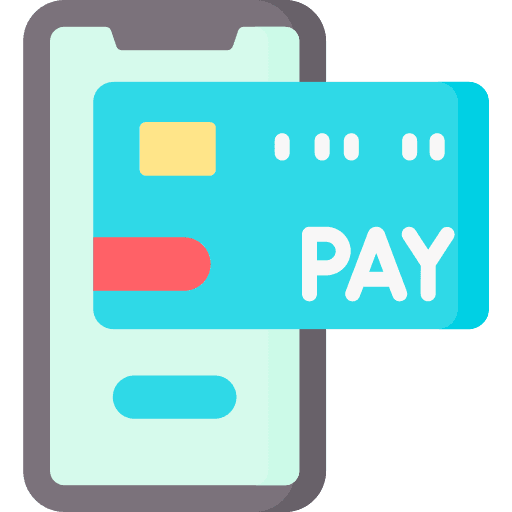If you find yourself coming up short before payday, a pay on demand or pay advance app could help you make ends meet. Pay on demand lets you access money from your pay cheque early, for a fee. These small, short term loans can be used to cover unexpected expenses towards the end of the month.
While they are significantly less expensive than traditional payday loans, and they don't charge interest like a credit card, you are paying a fee to access money that is rightfully yours. And it could impact your future ability to save, so proceed with caution.
Compare pay on demand apps and services
1 - 1 of 9
How do pay on demand and pay advance services work?
Pay on demand services are app-based loan products that give you instant or fast access to a portion of your pay ahead of payday. They usually connect either to your bank account or are offered through your employer. These loans are then automatically repaid once your employer pays you. In the case of most of these platforms, the process will look something like this:
- Download the app and create an account
- Request your money
- Receive it instantly for a fee (either flat or percentage-based)
- Repay automatically when you receive your pay cheque
These apps are designed to help Australians who are living pay cheque to pay cheque. You can use these loans for small expenses such as travel costs or groceries, or to bridge the gap in funds for a larger, essential bill. Their intended use is basically anything that an interest-free buy now pay later service would be unable to cover. If repaid in full and on time, this type of finance is significantly cheaper than traditional payday loans.
Features of pay advance services
You may find the following features with pay on demand services:
- Loan amount. You can generally borrow between $100 and $1,250 using pay on demand.
- Minimum income requirement. You'll likely have to provide proof of a minimum income to be eligible.
- Repay automatically. Many providers link to your bank account for automatic repayments.
- Quick access to funds. Employer-offered services and pay on demand apps usually take 2 business days before you will see the money in your account. Bank-offered services could see money in your account instantly.
- Additional costs may apply. If you fail to repay your loan/prepaid salary on the allocated day, you may be charged additional fees or interest.
- Short repayment times. Repayment times are less than 1 month (by your next payday).
Types of pay on demand services available in Australia
There are 3 main types of pay on demand services available in Australia. These include:
- Pay on demand apps. Pay on demand apps (e.g. Beforepay, MyPayNow) are non-bank providers that charge you a fee to access money ahead of your payday, without involving your employer. These apps generally charge the maximum one-time fee of 5% to use their services, but do not charge interest. Pay advance providers usually do not perform credit checks.
- Employer-offered services. Employer-offered services (e.g. InstaPay by Employment Hero) are pay on demand services that are offered by your employer, but are coordinated by a payroll provider via a third-party app. This type of pay advance service gives employees access to the money they earn as they earn it, rather than making them wait until their standard payday. Because third-party app providers charge employers to use their services, these are generally the lowest cost options for employees. Payments take 2 business days to clear into your account.
- Bank-offered services. Bank-offered services (e.g. Commbank's AdvancePay) are provided by authorised deposit-taking institutions (ADIs). These services can be accessed instantly via your mobile banking app. If you don't make payment in full by the nominated date, you may need to pay interest on the outstanding amount.
Is pay on demand a loan?
Pay advance apps don't charge interest, and you're technically gaining access to money you already earned. So is it a loan if it's your own money being advanced to you?
Part of the appeal of pay on demand is that it's presented as an alternative to existing lending options. While it is technically true you're asking for an advance on your own money, this money is not coming from your job or employer. The provider intervenes and provides it to you from their own financial reserves. They then charge a fee for it and deduct the amount owed from your next pay cheque. In essence, this means you've taken a loan.
This is important to keep in mind given how easy it is to access finance. A loan means money you have to pay back, no matter how easy it is to get the loan.
4 things to keep in mind when using pay on demand apps
If you decide a pay on demand service is right for you, here's what to keep in mind to find the best deal and avoid financial difficulties:

1. What fees are they charging me?
Depending on the provider, you may have to pay a fee per transaction. While interest is not charged, the service is usually not free. It may not seem like a lot, but these costs do add up, especially if you plan to use the service regularly.
To use an example, say you're asking for an advance of $500 from a standard pay on demand provider. With a 5% fee, you'll be paying an additional $25 in fees. If you use the service every month, you're paying $250 in fees in total every year. While this may seem manageable, keep in mind that these fees are being charged to access your own money and is not ideal for long-term use.

2. Short terms and budgeting difficulties.
Loan terms are generally short, with most providers offering a 31 day repayment term. Some lenders may provide terms up to 62 days at most. This means that you'll have about a month, or at most two, to repay the money. This repayment is automatically deducted from your next pay.
As you've taken part of your pay in advance, what's left for that month is your balance pay cheque. The following month, your pay will be minus the money you borrowed. You don't have the luxury of borrowing and paying the loan back incrementally.
This could create problems with your monthly budget. It's useful when there's an emergency - say, your dog got sick and you have to pay the vet. You get part of your pay in advance, but will that leave you short for the rest of the month?
You may also find yourself short the following month when the advance is deducted from your pay. This could throw your budget off kilter and potentially leave you out of pocket for a while. This is particularly a problem if you don't have enough savings to fall back on, or your disposable income isn't high. If you don't have the margin for a loan with a short term, you should reconsider.

3. Responsible lending.
Unlike traditional loans, including credit cards, pay on demand apps are not subject to responsible lending laws. The industry is largely self-regulated, leaving you with fewer legal protections compared to traditional loans. This can have several implications.
With your average loan, the lender is legally obliged to check your income, expenses and perform a credit check. They are only able to lend if you can repay the loan without creating a financial squeeze.
Pay on demand providers also check your income, but this is done to determine how much you earn, which in turn determines your credit limit. Without responsible lending laws, they aren't obliged to look into your expenses and ensure you can afford the loan. This doesn't mean they are in any way malicious or wish to create financial hardships, but it's up to you to ensure you can pay the loan back without difficulty.
In short, responsible lending laws allow you some protection, without them you will rely on the pay on demand product's internal processes.

4. Best used only in emergencies
Because of the above, pay on demand should only be used in emergencies and not become part of your regular budget. While it's better to save up a safety net, sometimes that's not possible and pay on demand could be a temporary solution.

Should I use pay on demand or a credit card?
To make sure you get the best product for you, check out our comparison of pay on demand and credit cards.
How to apply
Generally, how you apply for a pay on demand service will depend on the type of pay on demand service that you are opting for.
Frequently asked questions about pay on demand
Read more on this topic
-
Spot by Douugh
Spot allows you to borrow money instantly and repay it in 4 instalments with a fixed fee. Here's how to decide if it's right for you.
-
Beforepay vs MyPayNow
How does pay on demand platform Beforepay compare against MyPayNow?
-
Pay On Demand vs Credit Card
How does pay on demand compare to a credit card and how much will it cost?
-
foundU On-Demand Wages
foundU On-Demand Wages review, costs and how to apply.
-
MYPAYFAST review
Access up to 25% of your pay when you need it for a flat fee of 5% of the loan amount with MYPAYFAST. Apply today.
-
Wagestream
Access up to 50% of your wages before payday with terms up to 31 days.
-
PayActiv Earned Wage Access
Learn more about how PayActiv's Earned Wage Access service can help you access up to $500 of your paycheque for a $5 fee charged fortnightly (only if you access your wage before payday).
-
Employment Hero InstaPay
InstaPay is a pay-on-demand service offered by Employment Hero that allows employees to access salary advances of up to $250 per week for a flat fee starting from just $2.
-
CommBank AdvancePay
Find out more about AdvancePay, the Commonwealth Bank's new "pay on demand" platform accessible to creditworthy CommBank customers.
-
Beforepay
Beforepay is a smart app that allows you to access up to $200 of your wages ahead of your next payday, while simultaneously offering you budgeting solutions.